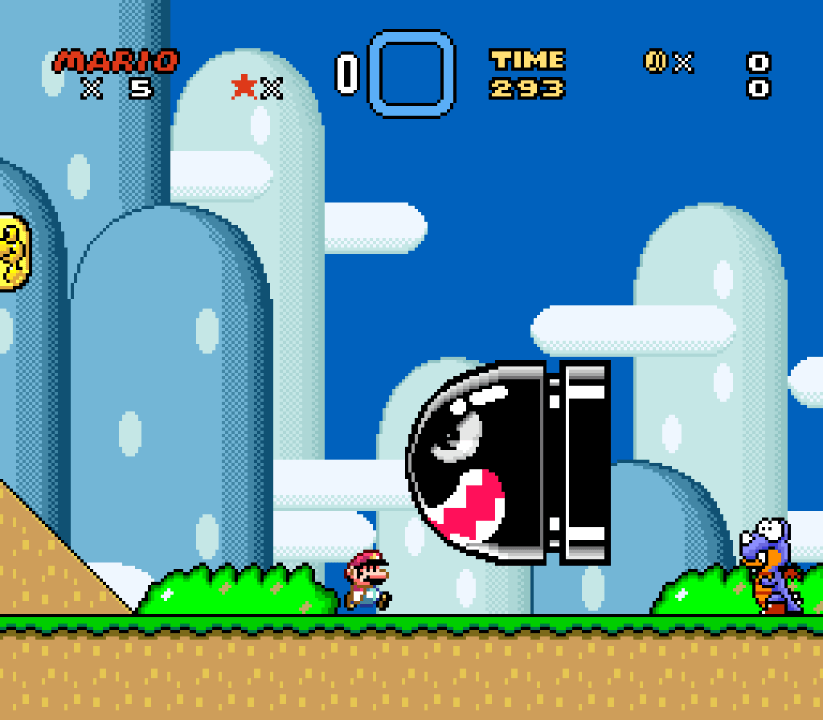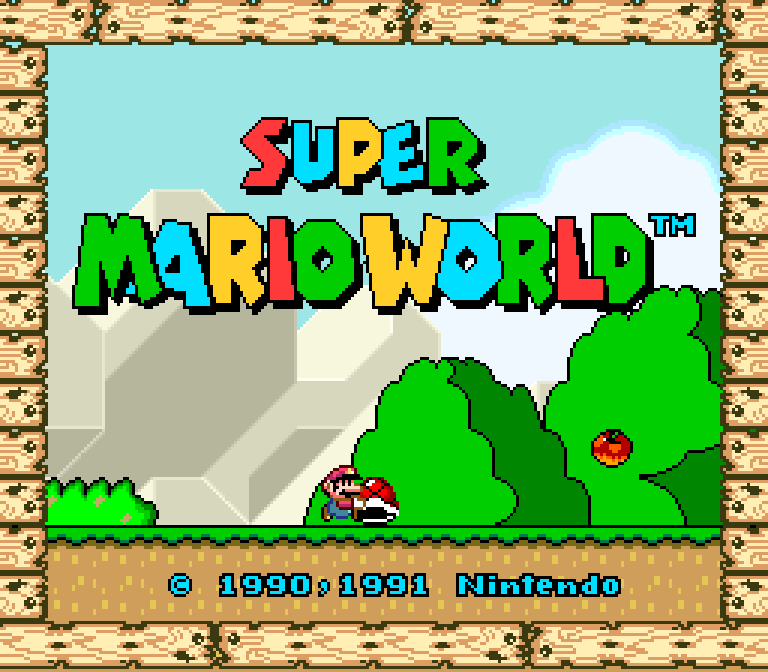Retrogaming Reviews
Latest · Alphabetical · Score · Picks · Random
Consoles
Arcade · Genesis · PS1 · PSP · SNES · TG-16
SNES · 2D Platformer · 1990
Who Among You?
Alright, hands up, who hasn’t played this one before? Anyone? Yeah, I see you there at the back of the room, shifting awkwardly and trying to avoid my judgmental gaze. I’ve got my eye on you, Kevin.
For many gamers of my generation, though, this was one of those games that every kid in class had played – and no wonder, since Nintendo made the bold move to bundle the game with the console when the SNES was all shiny and new, its glorious plastic case not yet yellowed with age, or stained with the tears of frustrated gamers.
Released a mere two years after its predecessor on the NES, Super Mario Bros. 3, here came Super Mario World, ready to show just what the overworked and underpaid plumber was capable of, all in glorious 16-bit colour, and with an unforgettable soundtrack by the legendary Koji Kondo to boot.
Mario’s adventure continues in a similar vein to its predecessor, though instead of being divided into worlds, the game’s 72 levels are split across multiple islands and other distinct areas, each charmingly different in both aesthetics and gameplay, from the early romp through the relatively easygoing Yoshi’s Island, to the mysterious Vanilla Dome and beyond. It’s a pretty bread-and-butter classic 2D platforming romp, with controls that still feel just as sharp and well-designed today as they did 35 years ago. Compared to its NES counterparts, this game is largely easier than the older games, especially with the introduction of battery-backed save files, but some of the later levels can still be satisfyingly challenging, especially the optional Star Road and the special stages that lie beyond.
Look & Feel

A screenshot of the action 30 seconds into a new game, as is tradition for lazy reviewers everywhere.
There’s so many little details that would make even the grumpiest gamer smile – fish splashing out of the water in a lake as you swim by, a friendly hill in the background getting a bandage on its head after having a castle crashed into it, the list goes on.
From the cheerful overworld theme to the spooky ghost house music and beyond, it’s hard not to be delighted by how perfectly Koji Kondo’s masterful soundtrack suits this light-hearted adventure, and the music while the credits roll is the icing on the cake, a perfect ending to this uplifting, vibrant and whimsical adventure.
The sound effects are equally as strong – certainly nothing that pushes the game’s hardware by any means, but they match the aesthetic and the vibe of the game perfectly, from the little plinks of picking up coins, to Mario’s distinctive yet impossible-to-describe jumping sound, to the whoosh of fire, the pop of exploring bob-ombs, the skittering of deadly sawblades, and so on. Everything has its own very unique and distinctive sound, fitting perfectly in with the vibrant, cartoonish aesthetic.
Technical Aspects
The controls are about as close to perfect as you’re likely to ever get from a 2D platformer, tight and responsive, incredibly easy to pick up and learn even for a complete novice, but with room for surprisingly advanced tricks in the hands of an experienced player. You can take the levels slow and steady, or blaze through like a crazed dervish. Sonic ain’t the only one who gets to go fast.
The difficulty curve is also pretty close to perfect, though perhaps leans a little towards the easier side of the scale, with the most difficult stages hidden away as optional challenges rather than mandatory to complete the game. The world map has multiple routes in the form of optional hidden exits from levels that unlock alternative paths, some of which allow skipping significant chunks of the game – as is Mario tradition, of course.There’s lots to see and explore, some secrets that are so well-hidden you’ll probably never find them without a guide (I still bear the shame of believing, as a kid, that 94 unlocked paths was a full completion of the game, only to have learned recently that the true completion score is 96), and some of the optional stages are surprisingly punishing. I challenge you to play this game and not have fun.
Its one drawback being a little on the easier side, but that only widens its appeal to be a game that almost anyone can enjoy. In my opinion, one of the best 2D platformers ever made, and a classic that has aged with almost perfect grace. If you’ve never played this one before, you owe it to yourself to give it a try!
The Verdict

Discussion
If your comment doesn't show up right away, don't worry! Sometimes they can be delayed, but it'll appear soon.










